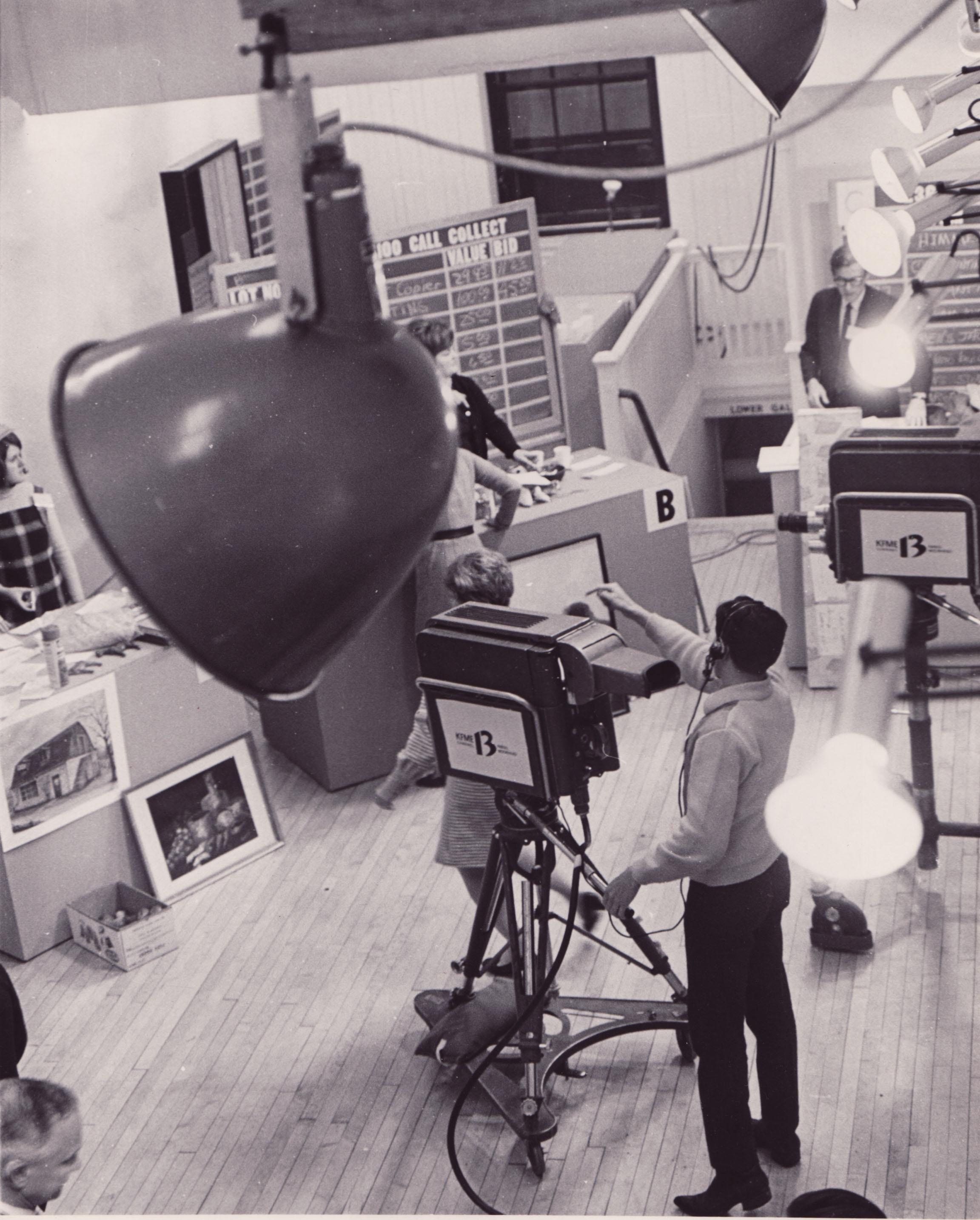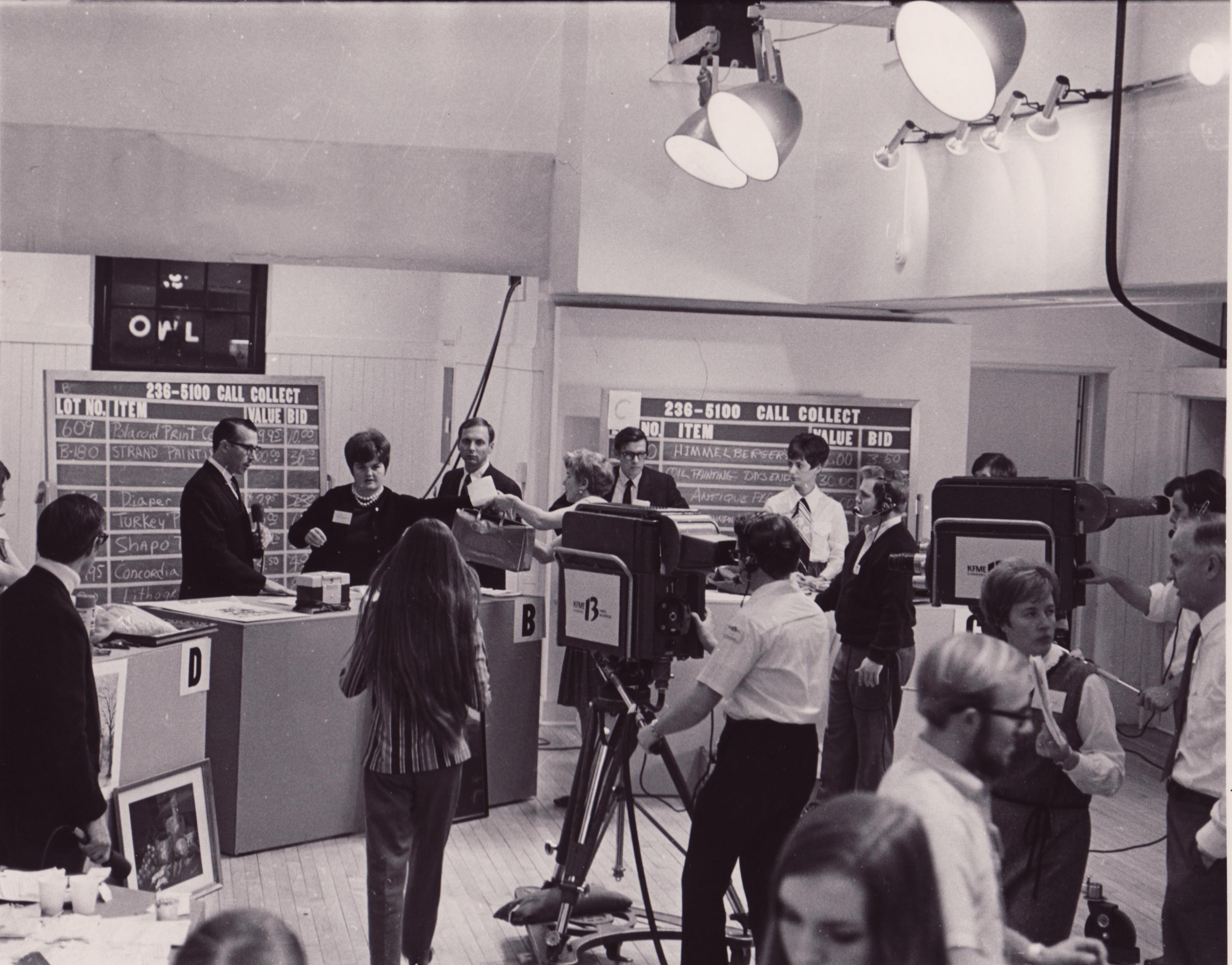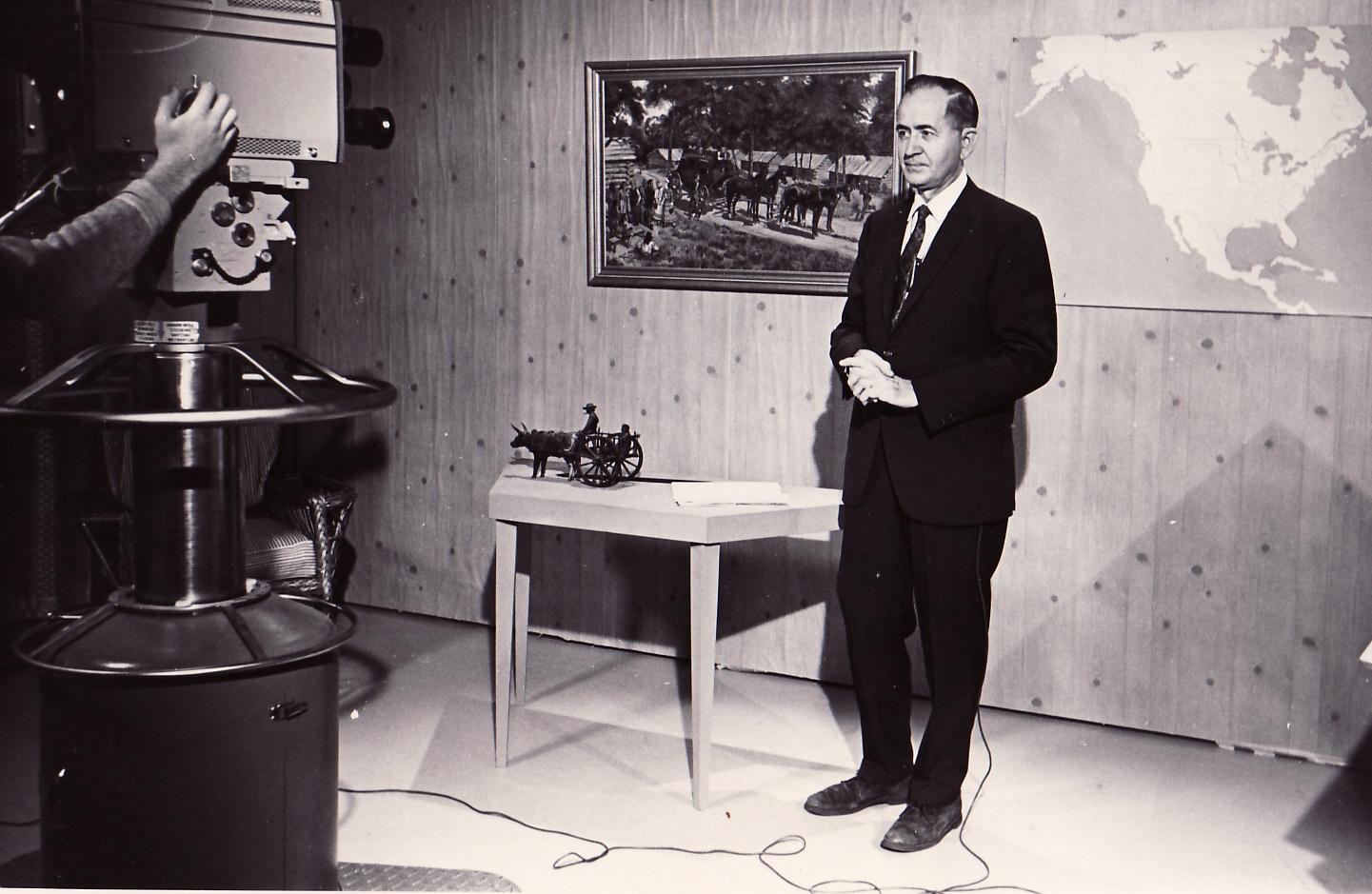
1959
The North Central Educational Television Association was incorporated by Dr. Ted Donat.
1961
The North Dakota Legislature appropriated $50,000 for educational television. Half the funds were used by Public Instruction to hire a consultant; the balance was used in 1963 to purchase a television antenna for KFME.
1963
Clair Tettemer was hired as general manager, the first employee.
KFME became affiliated with National Educational Television (NET), one of the station’s major national program suppliers.
KFME joined the National Association of Educational Broadcasters (NAEB).
KFME received from NET a grant of $65,000 for a videotape recorder and videotape.
KFME filed an application for $130,000 in federal funds
The North Central Council for School Television was formed.
1964
KFME signed on as the first educational television station in North Dakota.
Twenty-three school systems participated in North Central Council for School Television.
A federal grant for $130,000 was awarded.
1965
KFME joined Midwest Educational Television—a six state regional network out of St. Paul.
KFME began production of its first program, a 60-hour English Literature course for Concordia College, Moorhead.
The staff total was 11.
Prairie Public's first live studio broadcast was a teacher orientation series for the North Central Council for School Television.
The broadcast schedule was expanded to five nights a week and three hours on Sunday afternoons.
New studio production equipment was installed.
Production of the series Art About Us was initiated.
1966
KFME received a $50,000 Ford Foundation matching grant.
A federal grant of $25,000 was received to initiate a series titled Red River Land.
Ford Foundation awarded Prairie Public a $53,000 grant.
The Hill Foundation of St. Paul approved a grant for microwave interconnection to Minneapolis/St. Paul.
1967
KFME transmitter power was increased to 265,000 watts.
KFME began broadcasting programs in color via videotape, becoming one of a handful of educational stations to have color videotape facilities.
The Carnegie Commission coined the phrase “public television.”
The Public Broadcasting Act of 1967 was signed by President Johnson, creating the Corporation for Public Broadcasting.
1968
Western North Dakota Public Television Association was formed.
1969
The North Dakota Educational Broadcasting Council was established.
Public Broadcasting Service (PBS) was established.



